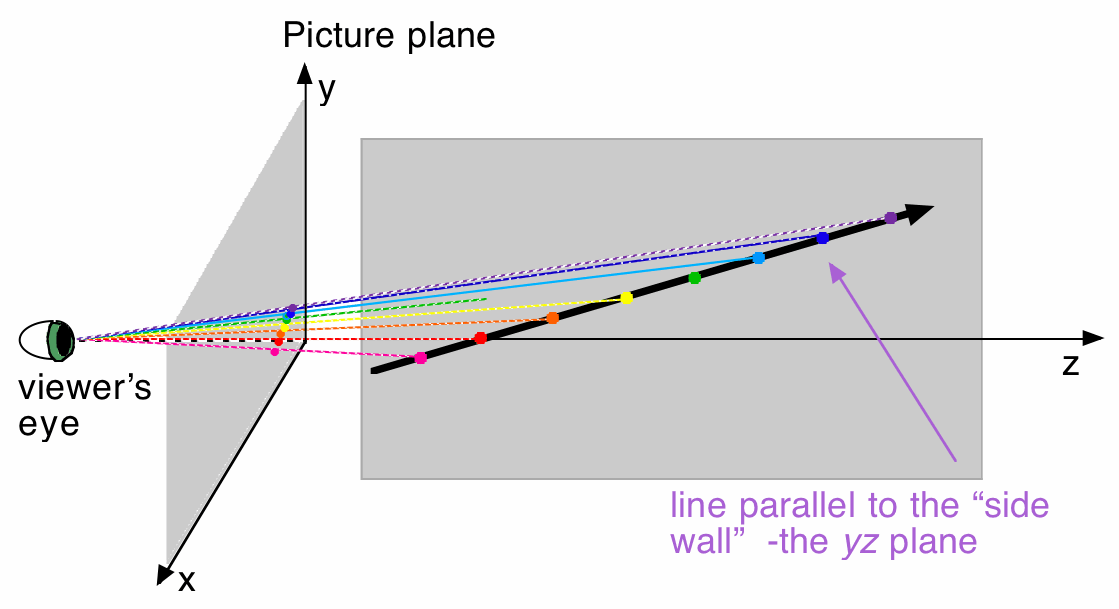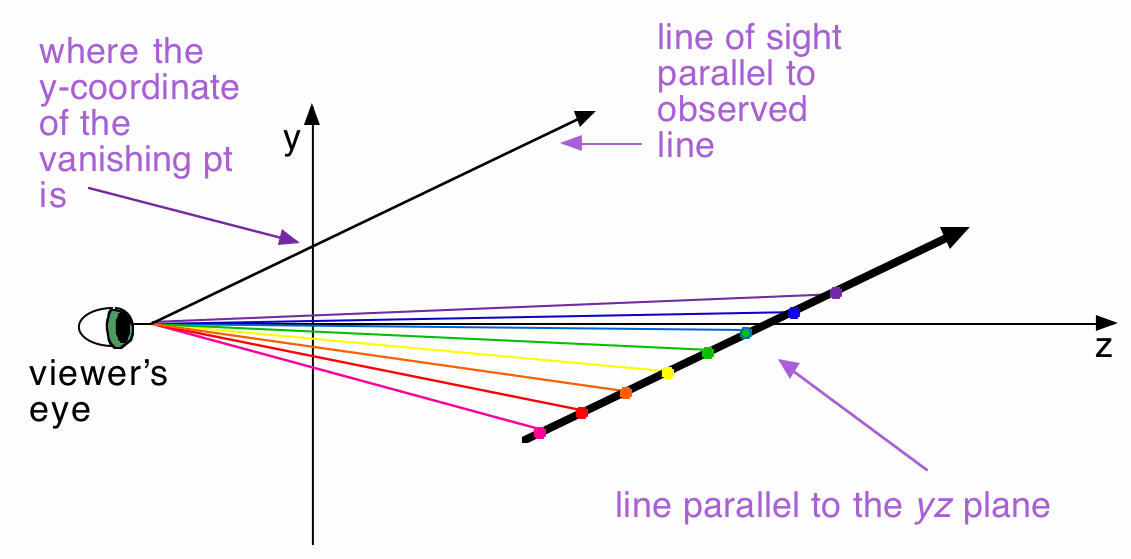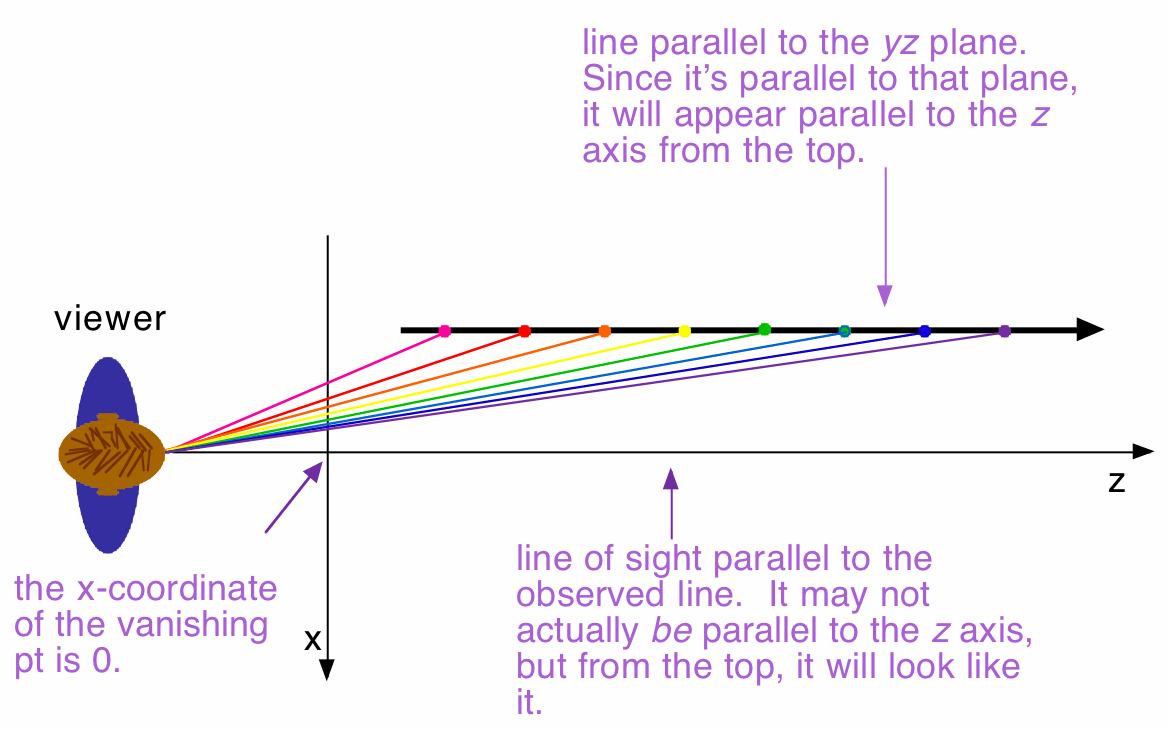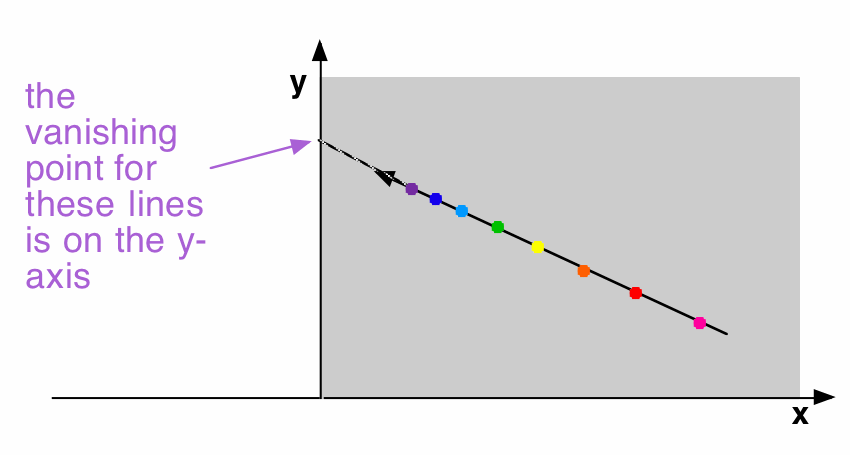Partial Side View (so you can see all three axes)

Finally, consider the specific case where a viewer is looking at a line parallel to the side wall/yz-plane. Once again, we ask: What does the viewer see?


As we have now come to expect, the farther out the viewer is looking, the closer together the y-coordinates of the perspective images of the points are getting --but they are not getting closer to y=0.
The line will vanish where the line of sight that is parallel to the observed line crosses the y-axis.

Again, the farther out on the line the viewer looks, the closer together the x-coordinates of the images are getting-- and the closer to x=0.
The line will vanish where a line parallel to the observed line crosses the x-axis, which will be when x=0.
Let's again rotate around to see what the viewer sees:

The point where it vanishes is the point where a line-of-sight parallel to the actual line crosses the picture plane. Since the viewer's eye is in the yz plane, and since the actual line is parallel to that plane, such a line of sight will lie in the yz-plane, and hence will intersect the y-axis.
| The perspective images of lines parallel to the yz plane (that is, parallel to the side wall) have vanishing points on the y axis. In practice, the line that plays the role of the y-axis is the vertical line through the vanishing point for orthogonals. It doesn't appear to have an official name. |